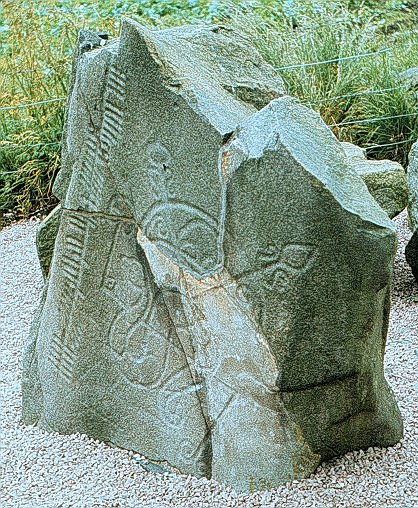Well, I'll give you an example of those "Pictish" inscriptions:
You're free to transliterate this yourself, but I read this as "IRATADDOARENS". Most so-called 'Pictish' inscriptions are similarly short. So, I'll return the question: do these rather unreadable inscriptions justify the assumption that a non-Indo-European language survived in dark ages Scotland?
"Caledonii" - you can compare the name with Breton "kalet", Welsh "caled" and Old Irish "calad", which all mean 'hard'. It's also found in the Gaulish tribal name "Caleti". The '-on-' is an augmentative form also typically Celtic (think of tribal names like "Senones" and "Lingones", etc.).
"Vacomagi" - the first element is also found in the Gaulish "Bellovaci", as well as possibly the Celtiberian "Arevaci" and "Vaccaei". The second element is probably the same as Old Irish "mag" and Gaulish "magus" ('plain', 'field').
About "Taezali" what should be added that other versions give the name as "Tazali" or even as "Taexali" - it's unclear what the original form was. What should be added (to quote Forsyth 1997, the link which I provided above):
"
If we are wavering in accepting the Celticity of these problematic tribal names, it is surely of the greatest significance that the river Deva ran through the territory of the Taezali. If Celtic-speakers were sufficiently established in the region to have named the major river, this should give us pause before dismissing a Celtic explanation for the local tribal name. Likewise with the river Tama and the place-name Bannatia in the territory of the Vacomagi."



